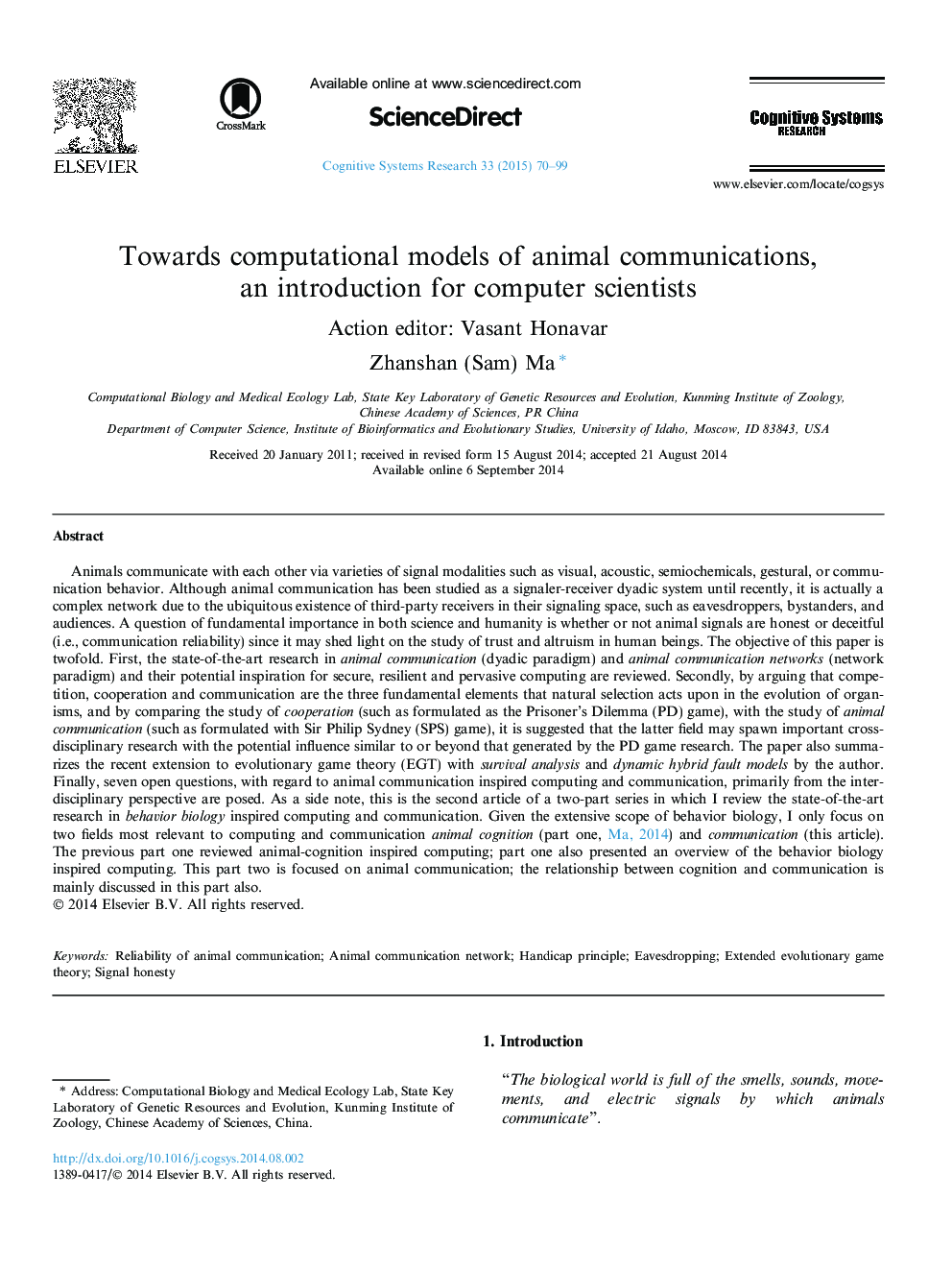| Article ID | Journal | Published Year | Pages | File Type |
|---|---|---|---|---|
| 378398 | Cognitive Systems Research | 2015 | 30 Pages |
Animals communicate with each other via varieties of signal modalities such as visual, acoustic, semiochemicals, gestural, or communication behavior. Although animal communication has been studied as a signaler-receiver dyadic system until recently, it is actually a complex network due to the ubiquitous existence of third-party receivers in their signaling space, such as eavesdroppers, bystanders, and audiences. A question of fundamental importance in both science and humanity is whether or not animal signals are honest or deceitful (i.e., communication reliability) since it may shed light on the study of trust and altruism in human beings. The objective of this paper is twofold. First, the state-of-the-art research in animal communication (dyadic paradigm) and animal communication networks (network paradigm) and their potential inspiration for secure, resilient and pervasive computing are reviewed. Secondly, by arguing that competition, cooperation and communication are the three fundamental elements that natural selection acts upon in the evolution of organisms, and by comparing the study of cooperation (such as formulated as the Prisoner’s Dilemma (PD) game), with the study of animal communication (such as formulated with Sir Philip Sydney (SPS) game), it is suggested that the latter field may spawn important cross-disciplinary research with the potential influence similar to or beyond that generated by the PD game research. The paper also summarizes the recent extension to evolutionary game theory (EGT) with survival analysis and dynamic hybrid fault models by the author. Finally, seven open questions, with regard to animal communication inspired computing and communication, primarily from the interdisciplinary perspective are posed. As a side note, this is the second article of a two-part series in which I review the state-of-the-art research in behavior biology inspired computing and communication. Given the extensive scope of behavior biology, I only focus on two fields most relevant to computing and communication animal cognition (part one, Ma, 2014) and communication (this article). The previous part one reviewed animal-cognition inspired computing; part one also presented an overview of the behavior biology inspired computing. This part two is focused on animal communication; the relationship between cognition and communication is mainly discussed in this part also.
